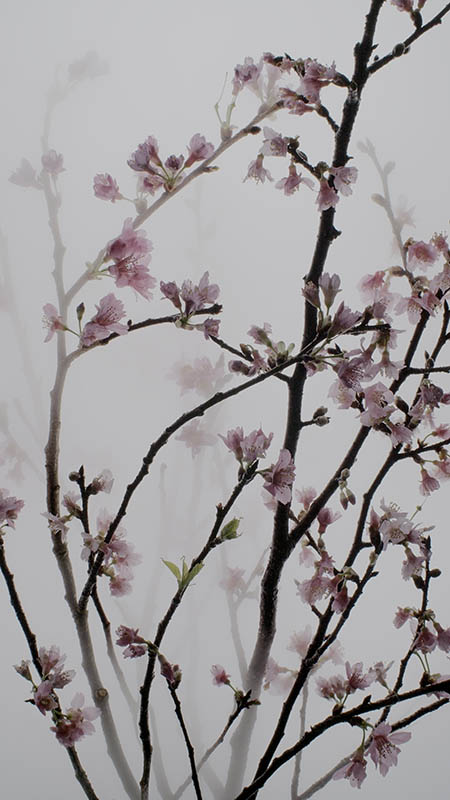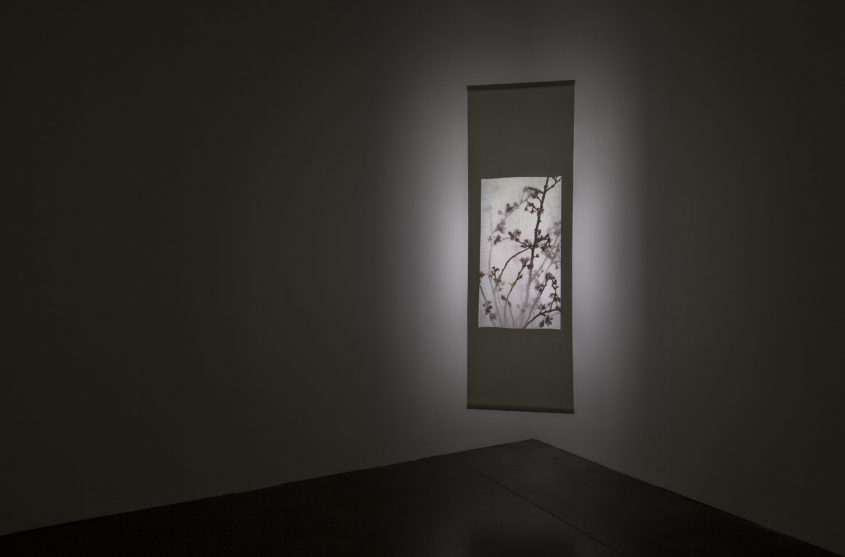
Wu Chi Tsung video work Still Life 005 – Cherry will be showcased in Flowers of Immense Charm – A Masterpiece Exhibition by Four Major Museums at National Museum of Fine Art, Taichung
Flowers of Immense Charm – A Masterpiece Exhibition by Four Major Museums
Date: 2018 Oct 6 – 2019 Feb 10
Participant Museums: National Palace Museum, Tokyo Fuji Art Museum, CHIMEI Museum, National Taiwan Museum of Fine Arts
Curator: Hsiao Chong-Ray
Venue: National Museum of Fine Art, 2, sec. 1, Wu Chuan W. Rd., Taichung 403 Taiwan
Under the auspices of the Ministry of Culture and Taichung City Government, Flowers of Immense Charm – A Masterpiece Exhibition by Four Major Museums is co-organized by the National Palace Museum, Tokyo Fuji Art Museum, CHIMEI Museum, and National Taiwan Museum of Fine Arts, and is expressly organized during the same time as the Taichung World Flora Exposition. This is a cultural event with Prof. Hsiao Chong-Ray serving as the exhibition’s chief curator; curators from the four museums also execute integrations and analyses. They have chosen the widely loved “flowers” as the theme of the exhibition, exploring different meanings and characteristics embodied by flowers that are depicted in artworks from different cultures. This is an exhibition that is suitable for people of all ages, and is also one that holds profound academic value.
A range of artworks of diverse styles is presented under the vivid and vibrant overarching floral theme, with the metaphors and profound meanings of flowers conveyed by the artworks examined. With a medley of artistic styles presented, different nationalities, cultures, and philosophical realizations about nature and life are also recounted, forming an epitome of human history and values encompassing different cultures and across different eras, which is profoundly etched with the prolifically rich image of flowers.
On view in the exhibition are select artworks from three major museums from northern, central, and southern Taiwan and also the Tokyo Fuji Art Museum. The transnational exchange and inter-museum collaboration are aimed at showcasing four different cultural contexts, worldviews, and value systems that have originated from Taiwan, China, Japan, and the West.
Based on the notable features of the four museums’ collections, this collaborative exhibition is categorized into the following: The National Palace Museum will be showing a selection of ceramics, objects, calligraphies, paintings, poems, and Chinese painting manuals; Western sculptures, oil paintings, and furniture from the 17th century and onwards will be presented by the CHIMEI Museum; the Tokyo Fuji Art Museum has selected a collection of screens, calligraphies and paintings from the Edo period; and the National Taiwan Museum of Fine Arts will present a range of artworks including oil, gouache, and watercolor paintings created during the New Art Movement in Taiwan’s Japanese colonial period to contemporary multimedia creations, which include digital images and installations.
The artworks on view in this exhibition demonstrate a wide range of genre and temporal dimension, showcasing artworks of different expressions, including objects, paintings, sculptures, spatial installations, new media art, and more. The artworks span across a millennium, extending from the 11th century to the year 2017.
In addition to the select artworks from the four museums’ collections, artworks by 20 Taiwanese contemporary artists are also presented in the exhibition, with the objective of highlighting Taiwan’s diverse cultural and art features. Moreover, in the midst of Asia’s symbiotic cultural development aligned with the rest of the world, a cultural perspective that defines Taiwan’s subjectivity and how art is interpreted is also constructed.
The chief curator Prof. Hsiao Chong-Ray believes that: on the whole, the different museum collections also highlight the ethnic characteristics of different cultures: from the collections of Chinese royalty, the works exhibited by the National Palace Museum reveal the artistry of skilled craftsmanship and reflect the scientific understanding and human restraint in governance for the welfare of the people. In contrast, the commercialism of Japan since the Edo Period reveals the sense of resignation toward life’s limitations among Japan’s upper classes as well as provides a glimpse into the rich and self-sufficient lives of the ordinary people; especially in the numerous folded screens with the change of seasons as its theme, and using the “pair” or “composite” technique in form, to reveal the deep-seated aesthetic consciousness and character of the Japanese people. Meanwhile, Western classicism, specifically the artistic character since the rococo period, combines the mythological imagination of Greek culture, not only in an eternal tug of war between the finite and the infinite, but also reflecting the life attitudes of optimism, pragmatism and practical of the people in the Western world.
As for the role of the National Taiwan Museum of Fine Arts, it is the abundant expression of the interweaving, stimulating diversity of cultures, with the elegance and subtlety of the heavy color painting from Japan, the depth and agility of Chinese brush and ink renderings, as well as the bold attempt and soaring imagination of Western culture.
Our hope is for the artworks and activities arranged for the exhibition to encourage the general public to actively take part in cultural events. Besides appreciating the union of art and lifestyle aesthetics, through the various symbolisms expressed through flowers, we hope that the audience could also enjoy a sense of elevated spirituality and to gain more epiphanies about life through art appreciation.

吳季璁影像作品《小品之五 櫻》,於花之禮讚—四大美術館聯合大展,國立台灣美術館展出。
花之禮讚—四大美術館聯合大展
時間:2018/10/6-2019/2/10
參與博物館:國立故宮博物院、東京富士美術館、奇美博物館與國立臺灣美術館
策展人:蕭瓊瑞
地點:國立台灣美術館,台灣臺中市西區五權西路一段2號
「花之禮讚—四大美術館聯合大展」由文化部及臺中市政府指導,國立故宮博物院、東京富士美術館、奇美博物館與國立臺灣美術館共同合作主辦,特別規劃於臺中花博期間展出。本展透過總策展人蕭瓊瑞教授的擘劃,以及四館策展人的統整、詮釋,選擇大眾喜愛的「花卉」為主題,探討不同文化中有關「花卉」在藝術創作中的意象與特質,是一場老少咸宜,同時又具有深度學術論述基礎的展覽。
本展以「花卉」作為繽紛鮮明的主題定位,藉由作品多樣風貌的呈現,縱觀「花」在藝術創作中傳遞的隱喻與深意,展現多樣的藝術風采,亦闡述不同民族、文化對於自然與生命的哲思體悟。而「花」亦以它萬般富饒的形象,深刻地刻畫不同文化與時代下,人類歷史與價值的縮影。
本次展覽,精選臺灣北、中、南三地重要博物館/美術館,以及日本東京富士美術館典藏精品,透過跨國交流與館際之間的合作,企圖展現臺灣、華夏、日本與西洋四種不同文化脈絡的世界觀與價值觀。基於四館各自的收藏特色,本次的聯合展出,也界定四館的展品方向分別為:故宮以中國宋代以後的陶瓷、器物、書畫及詩箋畫譜為主;奇美以西洋17世紀以後的雕塑、油畫、家具為主;富士美術館展出江戶時代以後的屏風、書畫;國美館則以日治時期的新美術運動作品(油畫、膠彩、水彩)至當代多媒材的創作(含數位影像、裝置)為內容。
此次展出作品類型及時間向度十分多元:包含器物、繪畫、雕塑、空間裝置、新媒體藝術等不同藝術形式表顯手法,年代則從11世紀一直到2017年,橫跨約1000年的跨距。除四館典藏精品外,本展並特別邀請20組臺灣當代藝術家作品,以突顯臺灣文化與藝術的多元風貌,同時在亞洲與全球文化的共榮發展中,建構主體定位與藝術詮釋觀點的文化視野。
總策展人蕭瓊瑞教授認為:總體而言,不同的館藏也凸顯了不同文化的族群特性:來自中國皇家的收藏,故宮的展品顯示了巧工巧匠的技藝,也反映了深具經世濟民的科學理知與人性節制。相對地,日本江戶時代以來的商業氣息,既可看見日本上層社會在華美中慨嘆生命有限的無奈,也可窺見庶民浮世生活的豐美與自足;尤其許多屏風,是以季節遞嬗為主題,形式上採「雙幅」或「組合」的手法,呈顯日本人深層的審美意識與特徵。而西洋古典,尤其從洛可可以降的藝術特質,結合了希臘文化的神話想像,無不是在有限與無限間的永恆拉扯,也映現了西方人與天爭的樂觀積極性格和務實、實用的生命態度。至於國美館的部份,則是多元文化交織、激盪下的豐美表現,有來自日本重彩畫的典雅、含蓄,有中國水墨暈章的深沈、靈動,也有西方文化的飛揚想像與大膽嘗試。
期盼藉由本展所提供的藝術精品及相關活動規劃,能鼓勵一般大眾對文化活動的積極參與,除體會藝術與生活美學的結合之外,也能透過「花卉」的各種寓意提升心靈感受,從藝術欣賞之中獲得更多對於生命的體驗。